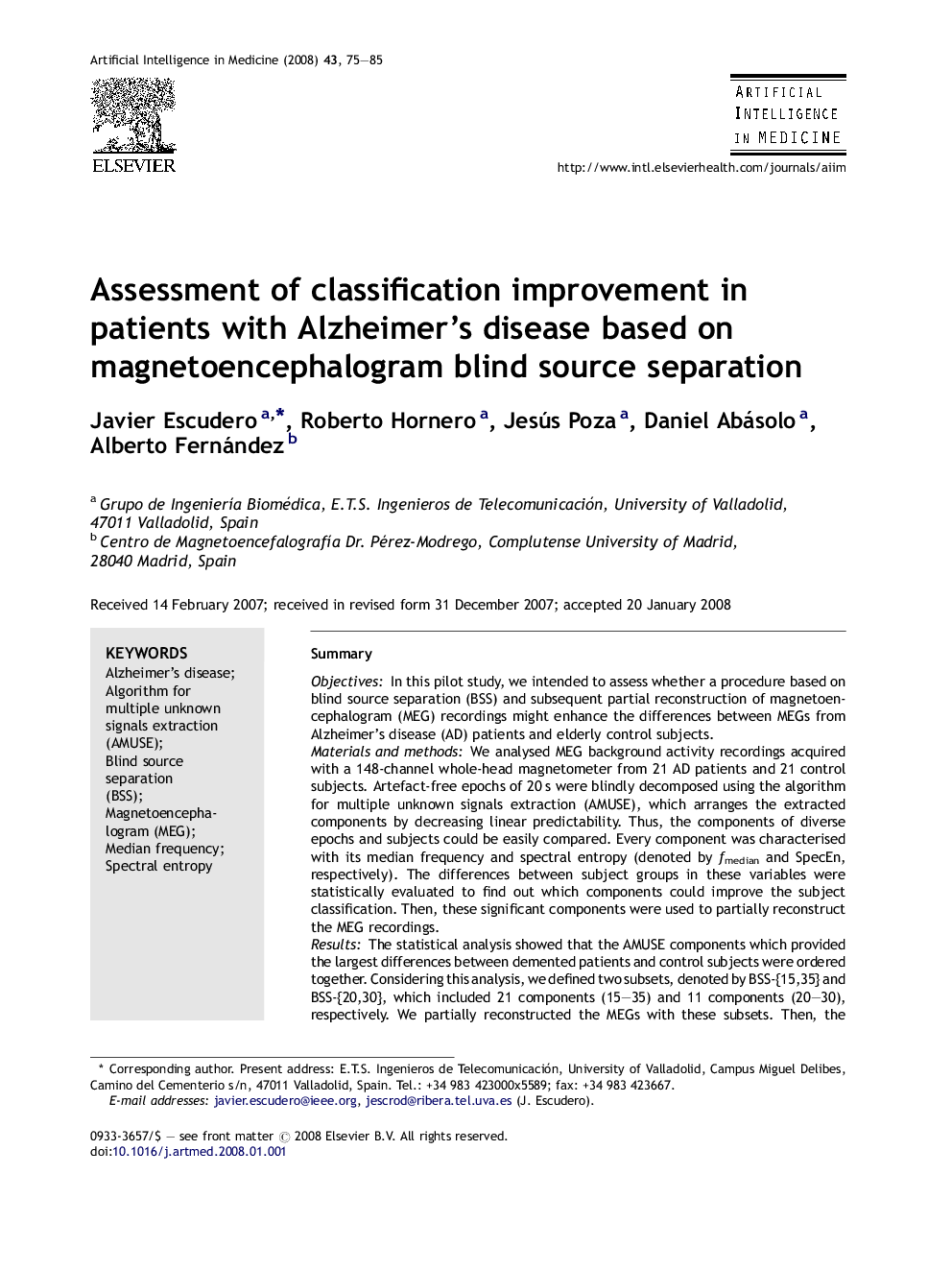| کد مقاله | کد نشریه | سال انتشار | مقاله انگلیسی | نسخه تمام متن |
|---|---|---|---|---|
| 377998 | 658862 | 2008 | 11 صفحه PDF | دانلود رایگان |

SummaryObjectivesIn this pilot study, we intended to assess whether a procedure based on blind source separation (BSS) and subsequent partial reconstruction of magnetoencephalogram (MEG) recordings might enhance the differences between MEGs from Alzheimer's disease (AD) patients and elderly control subjects.Materials and methodsWe analysed MEG background activity recordings acquired with a 148-channel whole-head magnetometer from 21 AD patients and 21 control subjects. Artefact-free epochs of 20 s were blindly decomposed using the algorithm for multiple unknown signals extraction (AMUSE), which arranges the extracted components by decreasing linear predictability. Thus, the components of diverse epochs and subjects could be easily compared. Every component was characterised with its median frequency and spectral entropy (denoted by fmedian and SpecEn, respectively). The differences between subject groups in these variables were statistically evaluated to find out which components could improve the subject classification. Then, these significant components were used to partially reconstruct the MEG recordings.ResultsThe statistical analysis showed that the AMUSE components which provided the largest differences between demented patients and control subjects were ordered together. Considering this analysis, we defined two subsets, denoted by BSS-{15,35} and BSS-{20,30}, which included 21 components (15–35) and 11 components (20–30), respectively. We partially reconstructed the MEGs with these subsets. Then, the classification performance was computed with a leave-one-out cross-validation procedure for the case where no BSS was applied and for the partial reconstructions BSS-{15,35} and BSS-{20,30}. The BSS and component selection procedure improved the classification accuracy from 69.05% to 83.33% using fmedian with BSS-{15,35} and from 61.91% to 73.81% using SpecEn with BSS-{20,30}.ConclusionThese preliminary results lead us to think that the proposed procedure based on BSS and selection of significant components may improve the classification of AD patients using straightforward features from MEG recordings.
Journal: Artificial Intelligence in Medicine - Volume 43, Issue 1, May 2008, Pages 75–85